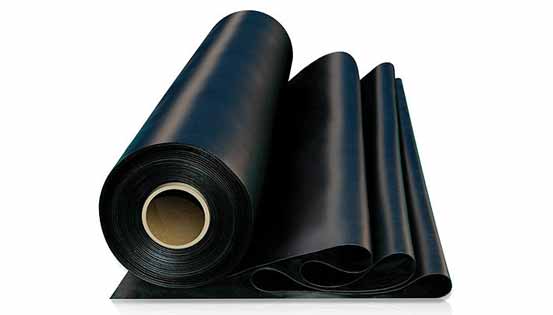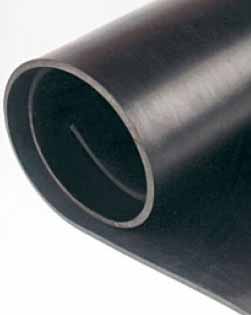Rubber industry has a tremendous global impact. Infact, it is very interesting to note the fact that in the history and the application of various materials, very few have made a large impact globally as natural and synthetic rubber. The natural rubber material stretches from plantations in Malaysia, Thailand, Indonesia to factories in almost all countries of the world. It is estimated that natural rubber accounts for only about 25% of the rubber used in industry. Synthetic rubber is the primary source of raw materials for many rubber products today.
World rubber market
The future of the rubber industry is tied to the global economy. The consumption of rubber worldwide during the period 1993-2003 was between 3.5 and 4.0% annually and was in line with the increase of world GDP. The growth rate for rubber should be more than those for motor vehicle production and motor vehicle registration in the coming years. Non-tire applications account for the majority of usage of rubber at 52 to 54 percent of the total, with little change expected. There are and will be numerous applications in various sectors like:
- Automotive (belts, hoses, gaskets, moldings)
- Industrial (adhesives, padding, belting, vibration dampening, wire sheathing)
- Consumer (toys, door moldings)
- Construction (roofing, sealants, moldings)


World rubber supply
Major producing countries of natural rubber are Malaysia, Indonesia, and Thailand. This is the reason why many of the large tire companies have vast holdings in South East Asia. Small producers equally play an important role. Synthetic rubber is manufactured in various plants to different specifications around the globe. The division between the two source of rubber is about 40 percent for natural and 60 percent for synthetic on a global basis and it is not expected to change much in the coming years.
World rubber demand
Demand for natural rubber is always greater than synthetic rubber because it is considered superior to synthetic rubber. As a result of its high quality, natural rubber is the preferred choice when making surgical gloves and drapes, contraceptives, shoe soles, nipples on baby bottles, rubber bands, even carpet backing, in radial tires and in blends with various synthetic elastomers, where its use improves weathering qualities.
The demand for synthetic rubber is aggravated by increasing growth for non-tire products, rising motor vehicle production, and stable pricing. Infact, the demand for non-tire rubber is expected to outpace world economic growth due to growth in industrialization levels in developing regions of the world. According to a recent estimate, world tire demand is projected to expand 2.6% every year, with OEM tire demand growth by strong gains in the global motor vehicle industry, and this requires a boost in the replacement needs by a steadily rising global motor vehicle park.
Industrial Rubber Products Demand
Global demand for industrial rubber products is estimated to rise to 4.3% annually through 2013 to $97.8 billion. Market advances in developing areas will further increase due to healthy economic growth, rising personal income levels, ongoing industrialization efforts and also due to growth in manufacturing output and fixed investment expenditures. The industrial equipment market, which includes industrial machinery and equipment, off-road vehicles, will continue to hold the largest share of aggregate demand in 2013.
China, which will surpass the US to become the largest market for industrial rubber products, will account for over one-third of all additional demand generated through 2013. India will also record strong gains, and sales growth is expected to be good as well in a number of lower-volume markets, like Indonesia, Thailand and Malaysia. Advances will continue to be strong in Eastern Europe.
Although there is slight slump , industrial rubber product demand in the US is expected to recover by 2013. Advances will benefit from a turnaround in motor vehicle production and there is ongoing process of recovery in the manufacturing sector. Western Europe and Japan will experience sluggish gains. However, these areas, including Australia and Canada, will continue to be the most intensive users of industrial rubber products because of the advanced industrial and technological nature of their economies.
Mechanical rubber goods comprised the largest rubber product segment in 2008. Suppliers of mechanical rubber products will benefit from continued gains and this is evident due to global motor vehicle production through 2013, as these products are highly represented in this market. Advances will be stronger in the hose and belt segments, reflecting their wide applications diversity and stronger price outlook compared to mechanical goods.
RELATED POSTSIndia Rubber Industry
Indian Rubber Exports
- Anti Vibration Mountings
- Automobile Rubber Products
- Calendered Rubber Products
- Extruded Rubber Products
- Medical Rubber Products
- Metal Bonded Components
- Rubber Adhesives & Sealants
- Rubber Ball
- Rubber Bands
- Rubber Beading
- Rubber Bearing
- Rubber Belt
- Rubber Buckets
- Rubber Bullets
- Rubber Cable
- Rubber Coating
- Rubber Duct
- Rubber Expansion Joints
- Rubber Flooring/Matting
- Rubber Footwear
- Rubber Gloves
- Rubber Injection Parts
- Rubber Lining
- Rubber Magnets
- Rubber Molded Products
- Rubber Pads
- Rubber Rollers
- Rubber Stopper
- Rubber Suit
- Rubber Track
- Rubber Valve
- Rubber Balloon
- Rubber Stamps
- Rubber Fenders
- Acrylic Rubber (ACM)
- Butadiene Rubber (BR)
- Butyl Rubber (IIR)
- Chlorosulfonated Polyethylene(CSM)/ Hypalon
- Ethylene Propylene Diene Monomer
- Fluoroelastomers (FKM)/Viton
- Isoprene Rubber (IR)
- Nitrile Rubber (NBR)
- Perfluoroelastomer (FFKM)
- Polychloroprene (CR)/Neoprene
- Polysulfide Rubber (PSR)
- Silicone Rubber (SiR)
- Styrene Butadiene Rubber
How to Make a Custom Rubber Stamp?
Whenever designing a custom stamp for your company, never compromise on its quality because in the end it is the most...
Read MoreLatex and Silicone Rubber Tubing - A Comparison!
Many industries use rubber tubing for various purposes. In fact, various types of rubber tubing are used for different applications...
Read MoreSilicone vs Acrylic Adhesive- A Comparison
Silicon and acrylic adhesives are those rubber adhesives that are widely used in Polyimide tapes. In fact, the polyimide...
Read More

